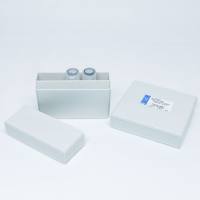Treatment of Murine Transplanted Subcutaneous Tumors Using Systemic Drug Administration
互联网
互联网
相关产品推荐

Recombinant-Synechocystis-sp-Drug-sensory-protein-AdspADrug sensory protein A EC= 2.7.13.3
¥14672

PRAME/PRAME蛋白Recombinant Human Melanoma antigen preferentially expressed in tumors (PRAME)重组蛋白Opa-interacting protein 4 ;OIP-4Preferentially expressed antigen of melanoma蛋白
¥1500

PIEZO1/PIEZO1蛋白Recombinant Human Piezo-type mechanosensitive ion channel component 1 (PIEZO1)重组蛋白(Membrane protein induced by beta-amyloid treatment)(Mib)(Protein FAM38A)蛋白
¥1836

Recombinant-Murine-coronavirus-Non-structural-protein-4-4Non-structural protein 4; ns4 Alternative name(s): Accessory protein 4
¥9884

PDCD1抗体PDCD1一抗抗体Systemic lupus erythematosus susceptibility 2 antibody抗体PDCD1 Antibody抗体
¥1100

